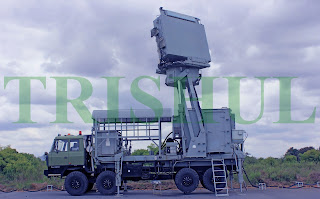India’s 69th Republic Day
parade at Rajpath yesterday, which was attended by the Heads of Government
of all 10 member-states belonging to the Association of Southeast Asian Nations
(ASEAN), was a once-in-a-lifetime opportunity for India to showcase its growing
military-industrial prowess by including several key homegrown/exportable weapon systems as part of the annual the parade
at Rajpath. Instead, the list of participating military hardware was finalised with
neolithic efficiency at best. Shown below are the principal types of hardware—operated
by all three armed services of India—that should have been showcased in the
order-of-precedence shown below, instead of imported hardware like the T-90S
medium battle tanks and BMP-2 infantry combat vehicles.
Strategic Systems
Army-Specific Weapons
Air Force-Specific Weapons
Next, we come to the shameful
spectacle of salutes being given by elected civilian government officials—a
practice that is forbidden for all except for the President of India, by virtue
of he/she being the Supreme Commander of India’s armed forces. No one else, expecially
hailing from the executive branch of the Govt of India, is required to give
salutes. And yet why do they continue with this practice? Perhaps they have either
falsely assumed that giving a salute symbolises one’s patriotism, or they are
just unaware of the origins of the practice saluting.
A
salute by anu uniformed military personnel is the highest form of respect that
any armed forces can display. It is a gesture of respect and trust among officers/soldiers
that encourages a pride in their uniforms, while at the same time elevates them
in their own eyes by reminding them all of that is implied by the profession
and its traditions of chivalry and courtesy.
The
Indian Army, Navy and Air Force have different salutes that have evolved over
time and are steeped in tradition. In the Army, a salute is executed by a open-palm
gesture with the right hand, with fingers and thumb together and the middle
finger almost touching the hatband or the eyebrow. It not only establishes
trust among the personnel, but also proves that the person saluting has no bad
intentions and no weapons hidden up anywhere. In the Navy, a salute is executed with the right palm facing the ground
at a 90-degree angle to the forehead. The reason behind this is to hide the
hands of naval personnel that get dirty due to oil or grease stains while
working on-board warshisp. In the olden days, since
the sailors were always working on-board their vessels, their hands would get
greasy and dirty. So they started saluting with their palms facing down, so as
to not disrespect their seniors. In March 2006, the Indian Air Force issued new
salute norms to its personnel. This new salute involves the palm at a 45-degree
angle to the ground and the right arm being sharply raised from the front by
the shortest possible way. It is a mid-way between the Army and Navy salute and
was standardised to make it more convenient for the IAF.
However, there is no prescribed saluting style for a
civilian (except for the President) and thus no civilian official is required
to give any salute at any event or at any place. All that a civilian (except
for the President) is required to do is to briefly stand in attention, leaving
the saluting to be done by the uniformed personnel. And yet, we have over the
past several decades seen elected civilian officials offering salutes in their
own bizarre styles as prescribed by their respective whims and fancies!
The above clearly shows who is the beginner in geopolitics and who is the established practisioner.
India’s
Diplomatic Fatigue In 1972 At Shimla: How Captured Chicken’s Neck
Area Had To Be Returned
And in the words of M. K. Rasgotra:
First act of terror committed by Pakistan against India on foreign soil (in 1972):
Diplomatic Myopia of UPA-1 Govt





















































